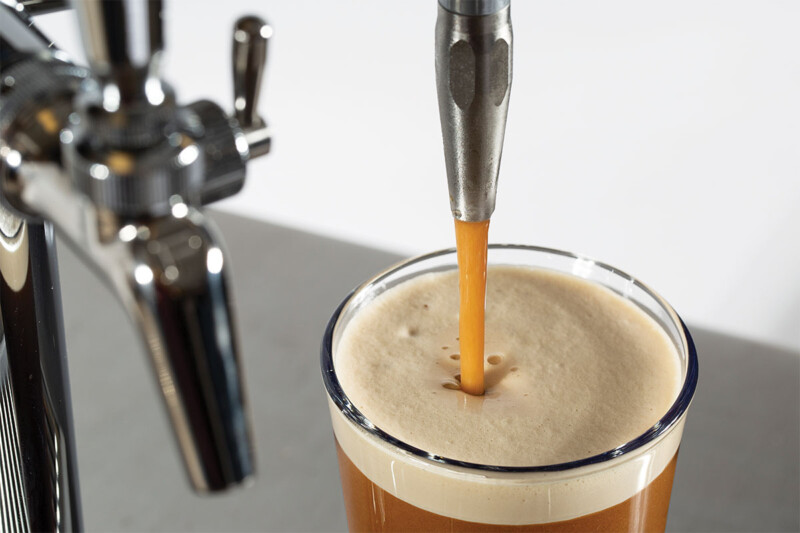Fryers’ Newest Features Add Efficiencies
Models’ latest features look to improve operations and a restaurant’s bottom line.
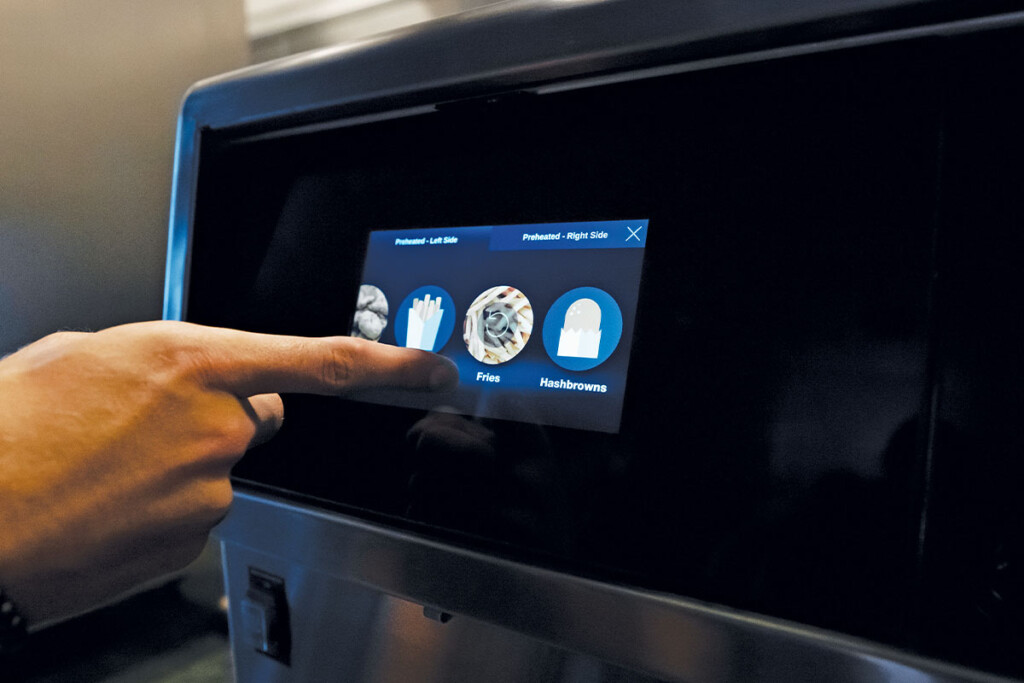
From appetizers to desserts and everything in between, fried foods show up in almost every foodservice operation, and for good reason: People love the taste of fried foods, and it’s something that’s not easy to replicate at home. “A fryer is probably one of the most profitable pieces of equipment in the kitchen, like a workhorse that sits in the back and prints money for the operator,” one maker says. And as manufacturers continue to improve technologies and add features, the potential return on investment for fryers continues to grow.
The newest features in fryers center around improving filtration methods and making operation more user-friendly. Both happen to work toward the same goal: Saving operators money on oil. As one maker says, the most expensive element of fryers over time is the oil, not the equipment itself. Keeping oil cleaner longer not only improves the quality of product coming out of the fryer, but also means oil changes can be spaced out further. Fryers with more intuitive, user-friendly controls lead to employees following best practices in cleaning and maintenance, which in turn leads to longer oil life.
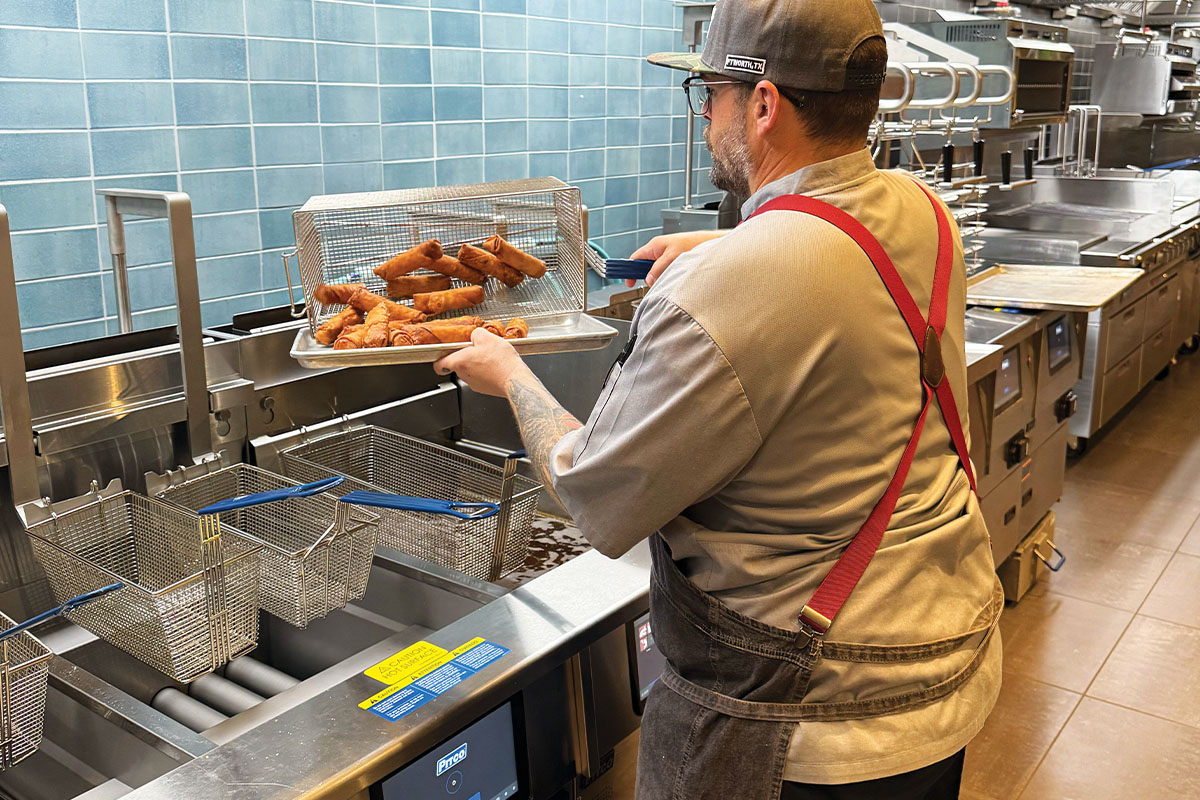
Consider product type when choosing a fryer; something like hand-breaded chicken does best in a larger fry pot. Courtesy of Pitco.
Focus On Improved Filtration
Automatic top-off and automated filtration processes have been an integral part of many fryers for some time. But recently, some manufacturers have introduced improvements that help those features work even more efficiently.
Improving reliability. After listening to feedback from operators, one manufacturer redesigned its automatic filtration system with a focus on improving reliability to minimize downtime. That meant using more heavy-duty parts, as well as developing a smart actuator, which backs off when it senses something caught in the drain. This feature eliminates the possibility of breaking the actuator if an employee sticks something down to unclog the drain. Another goal was improved serviceability. Engineers spent time taking the fryer apart and came up with ways to relocate components, reduce the number of screws and add smart wiring harnesses so that servicing equipment in the field could be completed faster, reducing downtime and labor costs.
Filtering at faster speeds. Time is of the essence during peak periods, and even with a fast filtration cycle, sometimes employees were overriding the filter recommendation to keep the fryer in use. One manufacturer combated that by shaving more time off the filtration process, getting the whole cycle to run in three minutes (compared to four minutes previously). A more powerful filter pump improved the speed and effectiveness of the wash, and it allowed the oil to be returned more quickly from the filter pan. The maker also removed some of the heavier metal components to reduce heat loss during the filter process, taking less time and energy to return the oil to cooking temperature. This feature is available on 30-pound open fryers which are popular in QSR locations where speed is a critical factor.
Adding agitation for cleaner tanks. Another way to improve speed is to agitate the oil to allow all the debris to collect, making it easier for the filtration system to get everything out faster. This feature on one maker’s line of fryers, combined with a larger pump and drain, enables fryers in 55-, 60- and 75-pound sizes to integrate automatic filtration with minimum downtime.
The ability to run a filtration cycle at the push of a button, with faster speeds than ever before, is one of the best ways to ensure employees are running the process when necessary. This helps keep the oil cleaner for longer, meaning fewer total oil change outs and improved cost savings in oil use.
Smart Capabilities Boost Efficiencies
Improved automatic filtration isn’t the only feature showing up on new versions of fryers. Touch-screen control panels, Wi-Fi capabilities and the ability to connect to the Internet of Things are key components of the latest lines and upgraded designs.

Icon-driven controls aim to make touch screens more user-friendly. Courtesy of Frymaster.
Some of the most recent touch screens have features that make fryers more user-friendly. One manufacturer’s 10-inch screen is larger than its previous version, with icons so the end user just pushes a picture to let the fryer control the recipe. Other upgrades from manufacturers include the ability for more customization, so operators can program specific recipes and LTOs easier, and a more durable screen that holds up to the wear and tear of a kitchen. It even reacts if the end user is wearing gloves or has oil on their fingers.
Quicker training times also is a benefit of fryers with touch screens. Anyone who is used to a smartphone or tablet can easily translate that to using a touch-screen control panel, which means operators no longer have to spend hours monitoring an employee they just hired.
These new control panels also include connectivity. Smart controls that alert the user when it’s time to run a filter cycle ensure the oil stays clean for longer, helping to improve consistency of fried products and save money by reducing the overall oil use. And operators can use the features to push menu updates and monitor data such as oil management and energy use.
Future-Proof Your Fryer Choice
When taken care of properly, fryers can last for many years. For that reason, manufacturers recommend considering not just what your needs are currently, but where you see your operation
going in the future. Opting for a modular system that can add or subtract a unit easily allows you to ramp up as you add menu items or separate things to eliminate possible contamination, such as potential allergens.
Features such as connectivity and connections to allow for oil reclamation services also are something to think about including, even if you aren’t using those services right away. The oil reclamation system parts aren’t very costly when put on in the factory but can be expensive to add on later.
5 other important things to consider:
1. Gas or electric? The type of power available will dictate the fryer’s energy source. While electric fryers are often classified as more energy efficient, there are benefits to both types. Look for rebates, which can apply to either gas or electric fryers, and vary by state.
2. Type of food. Freezer-to-fryer items work great in low-volume fryers, while hand-breaded chicken will need larger fry pots as it produces more sediment.
3. Volume. Size your fryer for the most efficient production during peak times.
4. Hood space. Fryers need to be under a hood, which means it’s important to consider the other equipment that will be sharing that space. Ventless hoods provide some flexibility, allowing fryers to be placed in their own space.
5. Filtration system. One of the biggest mistakes makers see operators make is choosing a fryer based on initial purchase price. Talking with a manufacturers’ representative can help you understand the total cost of ownership, and weigh issues such as energy use and oil costs when choosing which features to include on a new fryer.
From high-end fryers with all the bells and whistles to economy lines that get the job done, there are plenty of choices available for every type of operation. Understanding the technologies and features available can help you find the right fryer to serve customers the foods they crave.
Keeping Fryers Clean
Best practices for fryers include more than filtering oil as it’s in use. Employees need to dump and clean the entire fry pot on a regular basis to help ensure cooking quality and consistency remain at optimum levels and the equipment works efficiently.
Oil reclamation has become a popular way to dispose of oil. Operators partner with a third-party vendor to take oil for refinement to clean biofuels. This is done by using a gate valve at the back of a fryer hooked up to a tube in the wall that flushes the oil out of the fryer into the tank, and new oil comes in through the automatic refill feature. It’s recommended to clean the fry pot when it’s empty, and one manufacturer has introduced a cleaning solution that helps break down debris so less manual scrubbing is needed.
Employees also should clean the filter regularly, whether it’s wire mesh or a disposable paper or cloth cover.
Crunch Time
Peruse a selection of makers’ newest gas and electric open fryers, several of which can help conserve energy and oil.
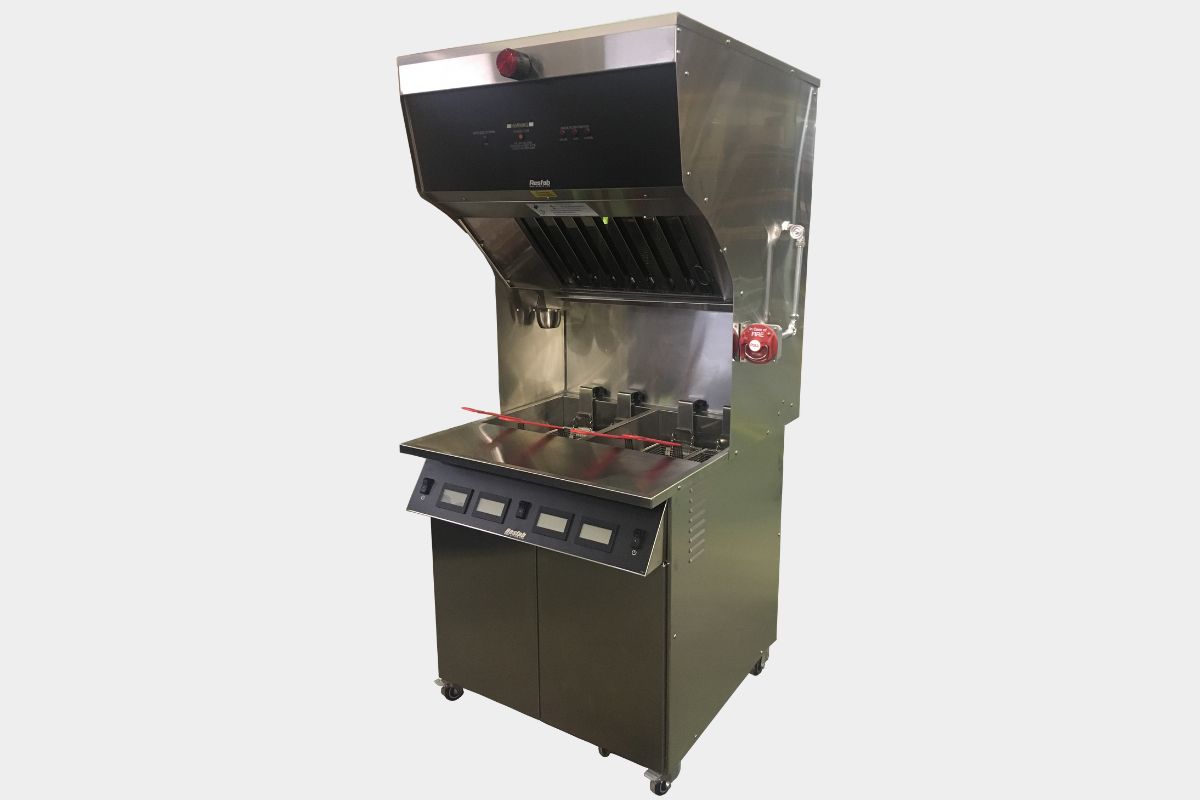
Resfab
Model: MB-502ATV
Type: Electric
Details: Program up to 99 menu items and choose from multiple basket configurations on this ventless, Energy Star certified unit with auto-lift. Idle and sleep modes save energy and oil. Integrated safety features ensure filters are properly installed, and the ability to wire each side separately offers operator assurance in an electrical event.
Website: resfab.com
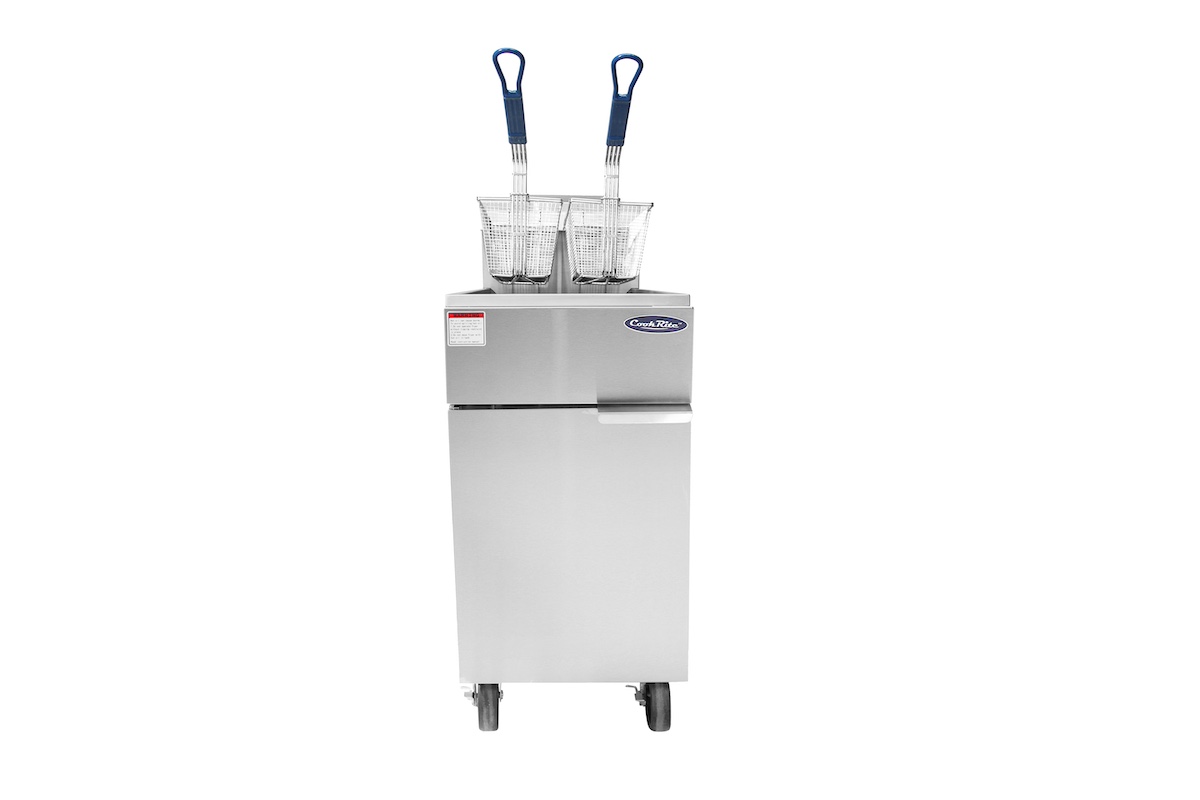
Atosa
Model: ATFS series
Type: Gas
Details: Choose from two-basket models with three, four or five burners—all of which can be manually set, with independent controls. This Energy Star certified line features an oil cooling zone at the bottom of the tank that captures food particles, extending oil life.
Website: atosausa.com
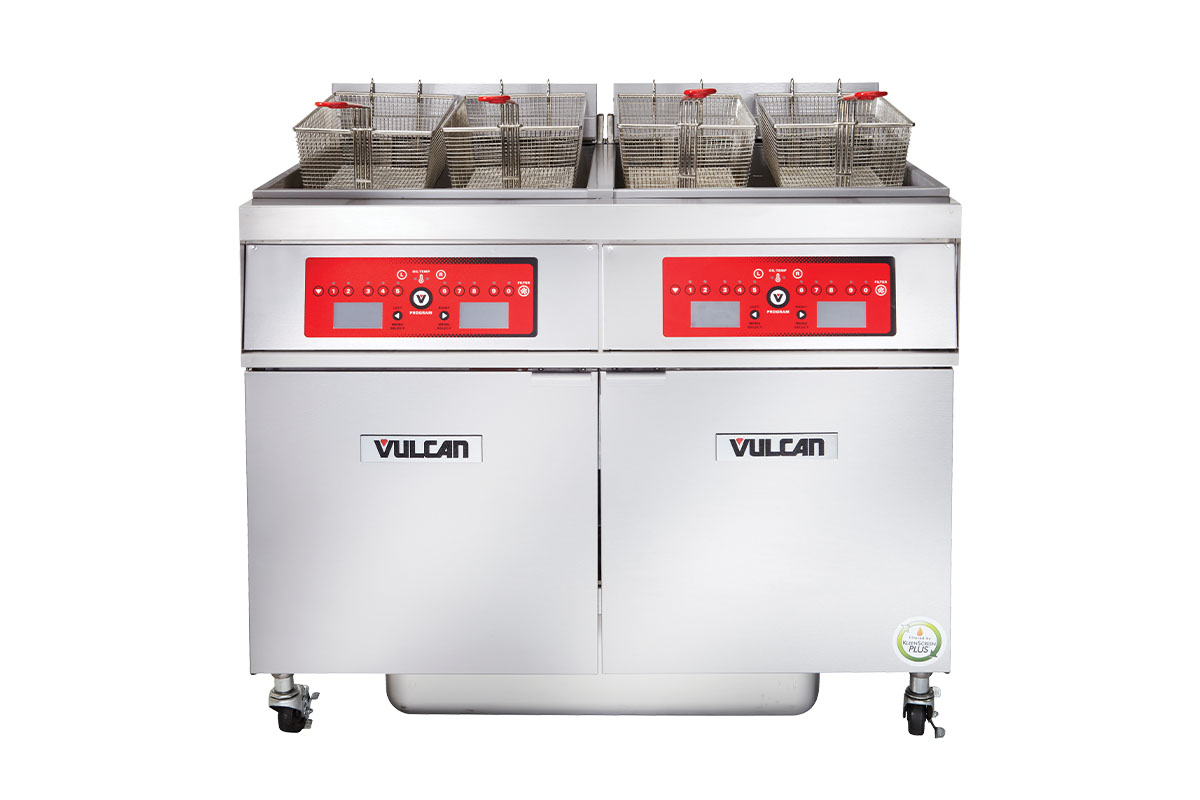
Vulcan
Model: 2ER85CF, with KleenScreen PLUS
Type: Electric
Details: The KleenScreen filtration system—compatible with up to four 50-lb. fryer cabinets (70-lb. shortening capacity) or three 85-lb. cabinets (110-lb. shortening capacity)—includes a stainless mesh screen and 1/3-hp motor and pump. Optional envelopes filter down to .5 microns. The flip of a switch activates a cycle, which can circulate 8 gal. of frying compound per minute.
Website: vulcanequipment.com
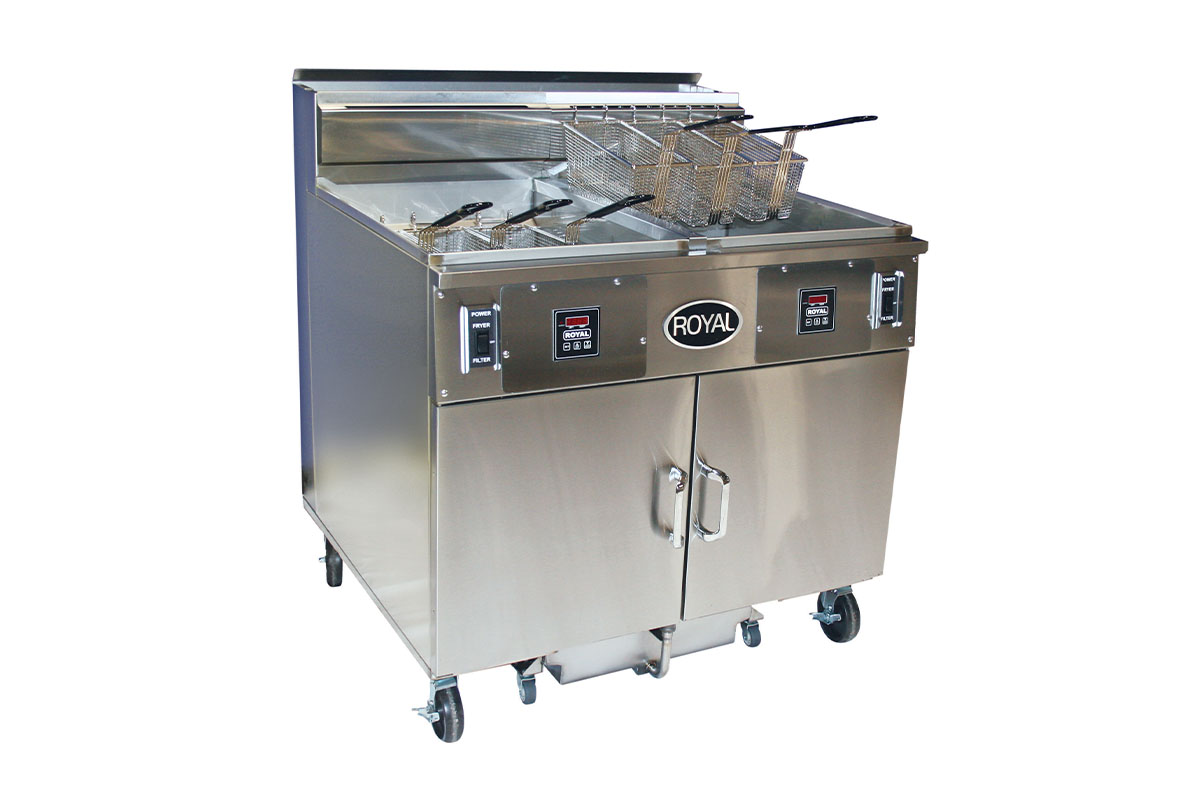
Royal Range of California
Model: RHEF-60 series
Type: Gas
Details: High-efficiency burners help drive a production capacity of 95 lb. per hour across three baskets. Choose from three temperature controls, including DM2 (time and temperature control; pictured). Models are available as a single unit or with a built-in fryer filter system.
Website: royalranges.com
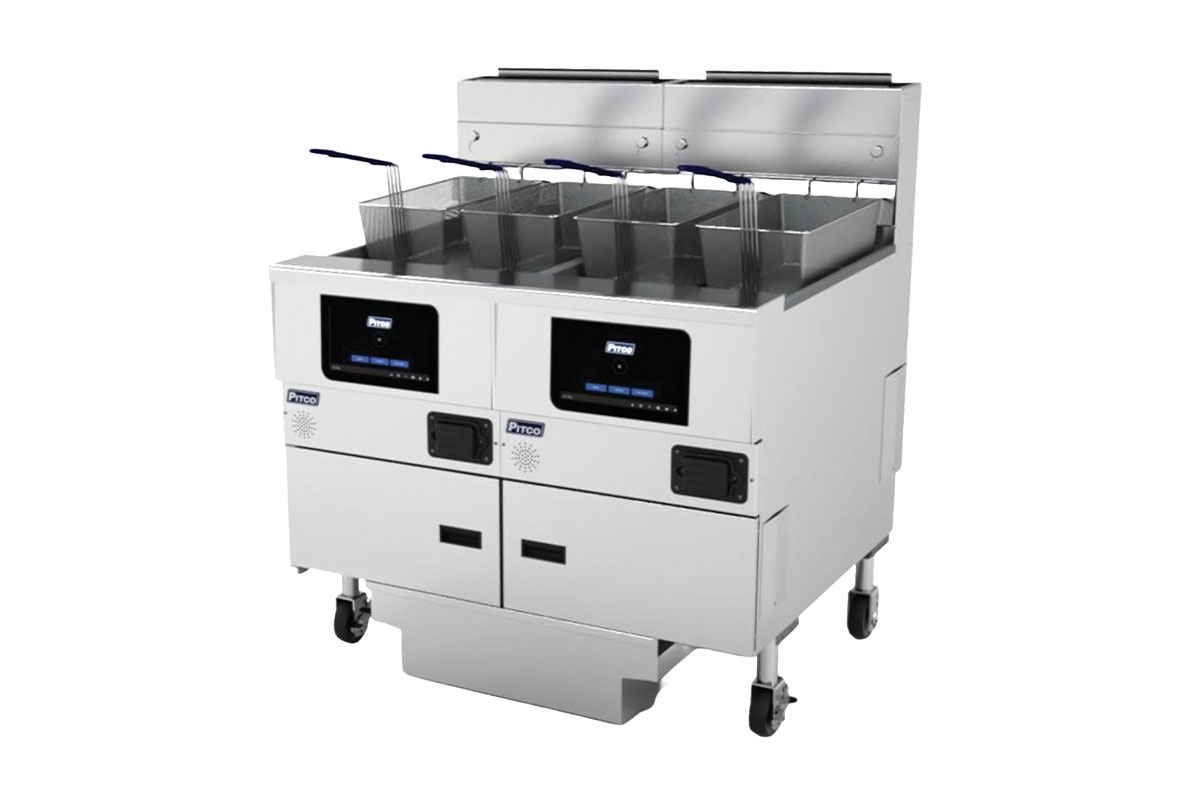
Pitco
Model: Smart Solstice Supreme series
Type: Gas or electric
Details: This modular unit boasts burner tech with 70% thermal efficiency. Fully automatic filtration (25% faster than previously) and a smart oil sensor keep oil health in check. A 10-in., icon-driven touch screen adds ease of use. Connect to the Open Kitchen connectivity platform for added data.
Website: pitco.com
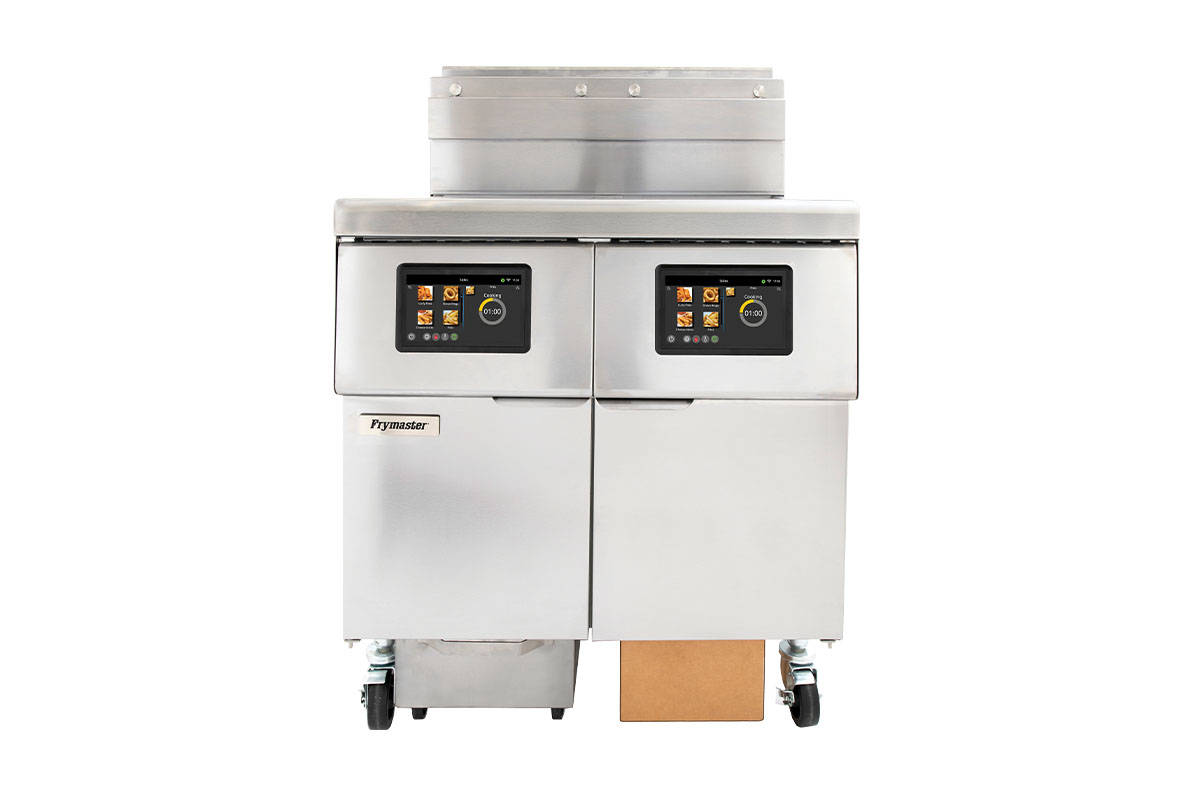
Frymaster
Model: FQIG30U
Type: Gas
Details: This 30-lb. model uses 40% less oil and 10% less energy than those with fry pots twice the size. More durable, heavy-duty parts minimize downtime and ease maintenance. Auto top-off and fully automatic filtration add convenience. Ten models—five electric and five gas—make up the redesigned line.
Website: frymaster.com
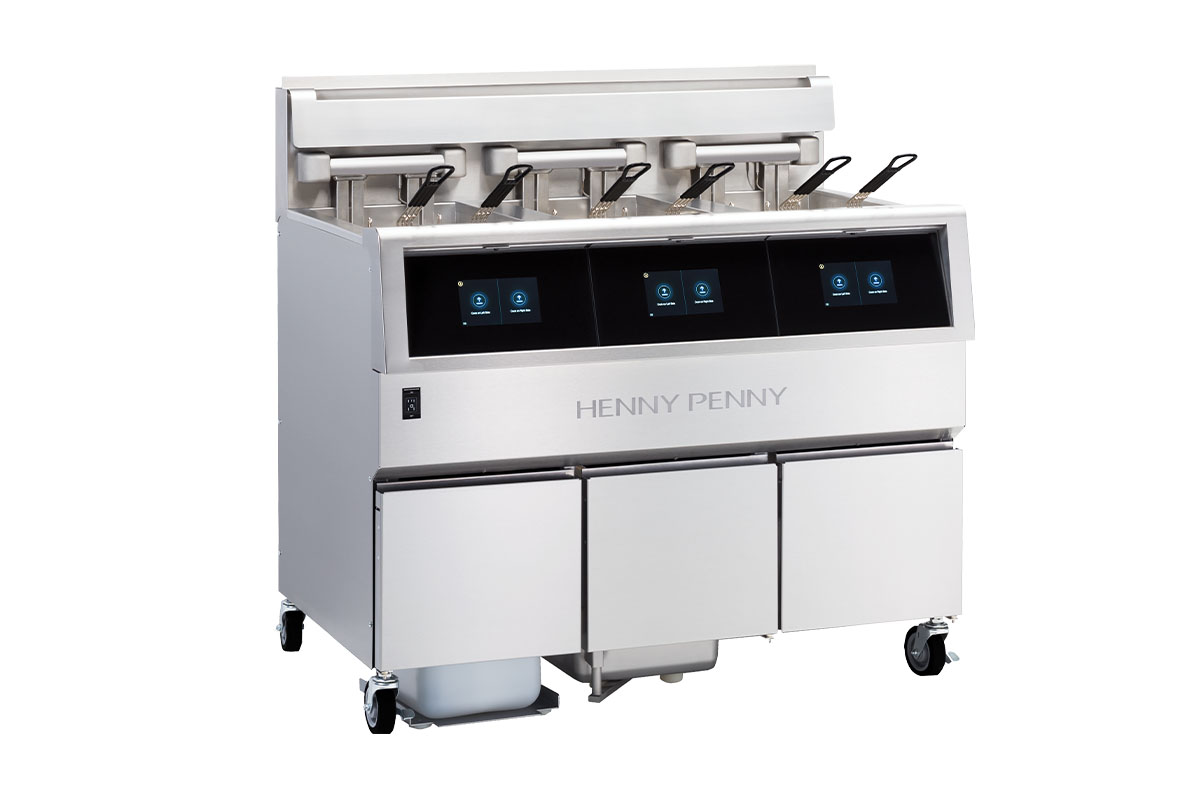
Henny Penny
Model: OFE 513
Type: Electric
Details: This three-well, Energy Star certified unit boasts a three-minute filtration time. A redesigned filter pan helps the oil retain more heat during filtration, helping it efficiently return to cooking temperature. Optional connectivity, a newer addition to the line, offers remote diagnostics and more.
Website: hennypenny.com
Editor’s note: Featured models have been released or updated since March 2023.
RELATED CONTENT
- Advertisement -
- Advertisement -
- Advertisement -
TRENDING NOW
- Advertisement -
- Advertisement -
- Advertisement -

